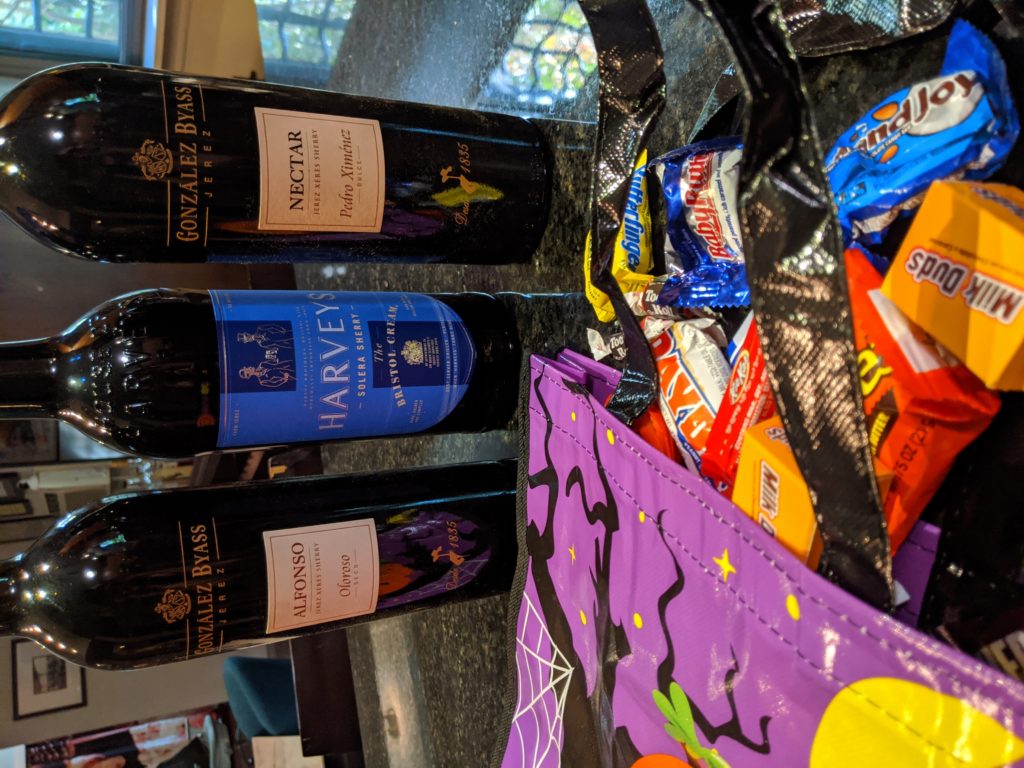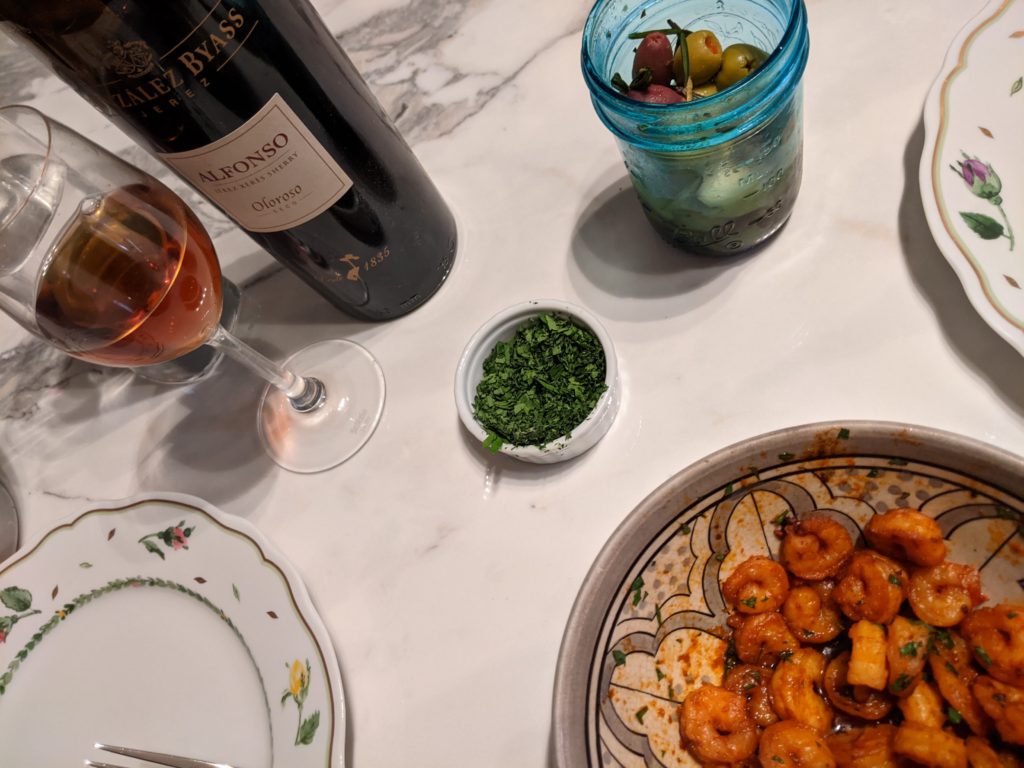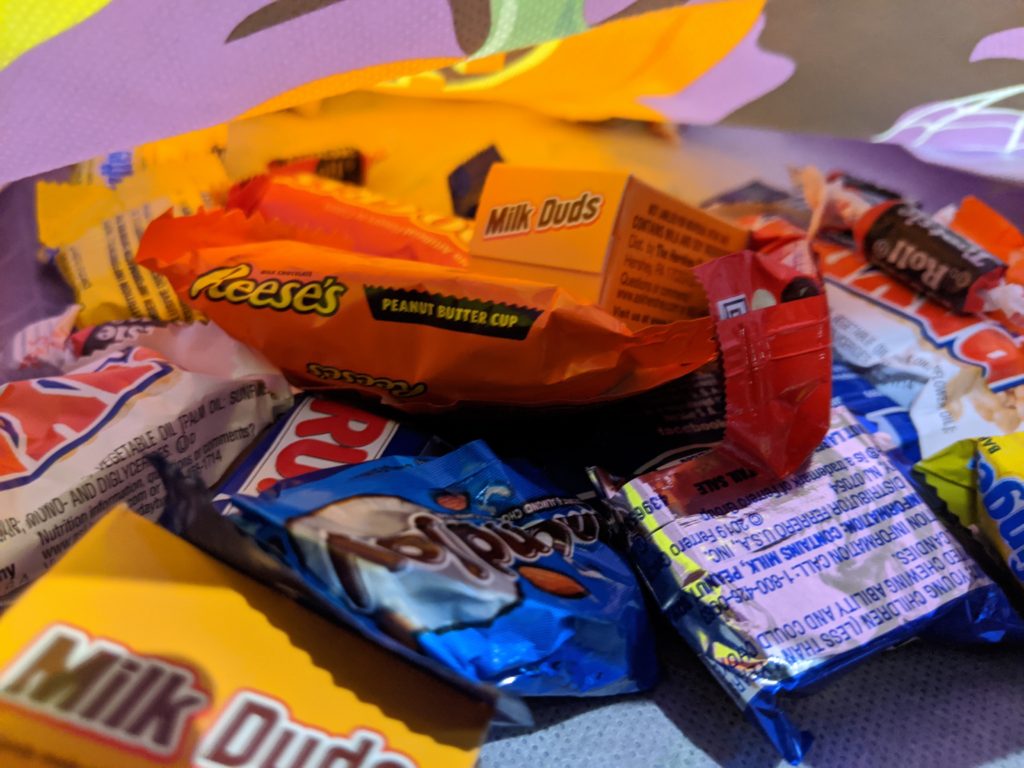
I used to love trick-or-treating as a kid – between costumes and candy, what more could any child want? Those days are somewhat over – you can still dress up, but folks might look askance if you showed up at their door begging for treats (or maybe not, perhaps your neighbors are more open minded).
In any case, it was with light-hearted fun that the folks from Gonzalez Byass Sherries reached out and offered up the opportunity to do a candy and Sherry pairing in honor of Halloween. They sent out three different Sherries and an assortment of decadent sweets. They say, “Candy is dandy, but liquor is quicker,” but this “food” and wine pairing was the best of both worlds, with the chance to indulge our inner child while indulging in adult beverages.
In anticipation of the holiday, I eagerly opened up the wines and dived into the candy on the day before Halloween. Interestingly, while it has been proposed that all three Sherries would be a match for at least one of the candies, I was surprised at how dry the Gonzalez Byass Alfonso Oloroso was (I hadn’t paid close attention before tasting and presumed that it was a sweet Oloroso; it was not).
I later checked the technical sheet and noticed that the residual sugar* was less than 4 g/l, further confirming the dry character of the wine. Of course, while I didn’t
personally enjoy the Oloroso with any of the sugary snacks, everyone has their own, absolutely valid, palate preferences. Moreover, I loved this wine on its own and found it to be a wonderful addition to a tapas-themed dinner the next night.

The Harvey’s Bristol Cream – always one of my favorites – was delicious with the caramel- and nut-infused treats such as the Milky Way, Payday and 100 Grand bars. Meanwhile, the intense Gonzalez Byass Nectar PX paired beautifully with rich chocolates and, most especially, with Reece’s Peanut Butter Cups. I really enjoyed the balance that the candy provided to this super sweet wine.
Although Halloween has come and gone, this tasting exercise is equally applicable to the upcoming Thanksgiving holiday where there will be treats aplenty on the table. I would serve the Oloroso with appetizers, especially dried fruits, nuts, charcuterie and cheeses. The Harvey’s Bristol Cream would be nice with lighter flavored desserts such as apple pie and cheesecake, with the PX being perfect with pecan or pumpkin pies. Or, if you are too full from the meal, you could simply pour a glass of the sweet nectar as you sit back and appreciate all that you are grateful for this year.

TASTING NOTES
Harvey’s Bristol Cream NV DO Jerez, Spain, $20.00 R/S 138 g/l*
An historic wine, Harvey’s was established in Bristol, England in 1796 and this wine in particular was first produced in 1882. Creamier in style than their other Bristol Milk product, the wine was given the name of Bristol Cream although it is not actually a cream liquor. It is a blend of 80% Palomino and 20% Pedro Ximenez, which have been solera aged for an average of 7 years. With aromas and flavors of orange peel, spice, caramel, this wine is off-dry to medium sweet, with medium+ body and long length.
Gonzalez Byass Alfonso Oloroso, DO Jerez, Spain, $25.00 R/S <4 g/l*
Produced from 100% Palomino grapes, this wine is aged for an average of 8 years in oak casks in a solera system. It is made in an oxidized style as a result of leaving air space in the casks, thereby adding color and depth to the finished wine. It is dry with baked apple, candied apple and baking spices, medium body and very long length.
Gonzalez Byass Nectar PX, DO Jerez, Spain, $25.00 R/S 138 g/l*
After being harvested, the 100% Pedro Ximenez grapes are dried in the sun on mats for up to two weeks, losing water content and concentrating flavors and aromas in the grapes. After fermentation and fortification, the wine is aged in solera for an average of 8 years. It is extremely rich and unctuous, with full body and notes of molasses, anise, raisins and other dried fruits, culminating in long length.
*Residual sugar (R/S) is a measure of how much sugar remains in the wine after fermentation has been completed and is expressed in grams per liter (g/l).


 On December 10, I had the delight of presenting a fun and festive tasting event with
On December 10, I had the delight of presenting a fun and festive tasting event with 